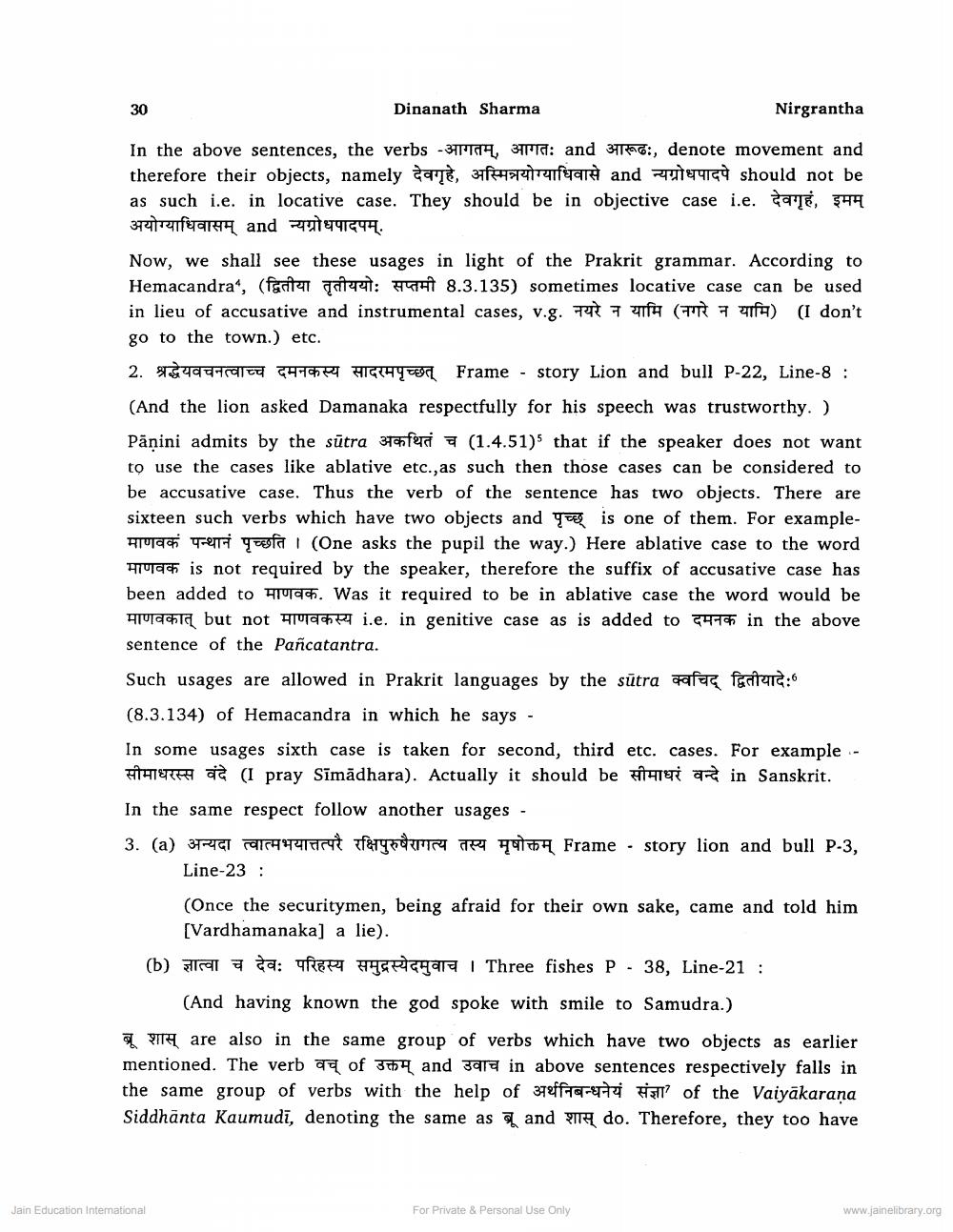________________
30
Dinanath Sharma
In the above sentences, the verbs -आगतम् आगत: and आरूढः, denote movement and therefore their objects, namely देवगृहे, अस्मिन्नयोग्याधिवासे and न्यग्रोधपादपे should not be as such i.e. in locative case. They should be in objective case i.e. 9, 49 अयोग्याधिवासम् and न्यग्रोधपादपम्.
Nirgrantha
Now, we shall see these usages in light of the Prakrit grammar. According to Hemacandra, (faden gatet: 8.3.135) sometimes locative case can be used in lieu of accusative and instrumental cases, v.g. (f) (I don't go to the town.) etc.
2.
Frame story Lion and bull P-22, Line-8: (And the lion asked Damanaka respectfully for his speech was trustworthy. ) Panini admits by the sutra fer (1.4.51) that if the speaker does not want to use the cases like ablative etc., as such then those cases can be considered to be accusative case. Thus the verb of the sentence has two objects. There are sixteen such verbs which have two objects and is one of them. For exampleमाणवकं पन्थानं पृच्छति । ( One asks the pupil the way. Here ablative case to the word
is not required by the speaker, therefore the suffix of accusative case has been added to . Was it required to be in ablative case the word would be माणवकात् but not माणवकस्य ie in genitive case as is added to दमनक in the above sentence of the Pañcatantra.
Such usages are allowed in Prakrit languages by the sūtra क्वचिद् द्वितीयादे: "
(8.3.134) of Hemacandra in which he says -
In some usages sixth case is taken for second, third etc. cases. For example - सीमाधरस्स वंदे (I pray Sīmādhara). Actually it should be सीमाधरं वन्दे in Sanskrit.
In the same respect follow another usages
3. (a) अन्यदा त्वात्मभवात्तत्परै रक्षिपुरुषैरागत्य तस्य मृषोक्तम् Frame story lion and bull P 3, Line-23:
Jain Education International
(Once the securitymen, being afraid for their own sake, came and told him [Vardhamanaka] a lie).
(b) ज्ञात्वा च देवः परिहस्य समुद्रस्येदमुवाच
Three fishes P 38 Line 21 (And having known the god spoke with smile to Samudra.)
are also in the same group of verbs which have two objects as earlier mentioned. The verb of 3 and 39 in above sentences respectively falls in the same group of verbs with the help of 372ff of the Vaiyakaraṇa Siddhanta Kaumudi, denoting the same as and do. Therefore, they too have.
For Private & Personal Use Only
www.jainelibrary.org




